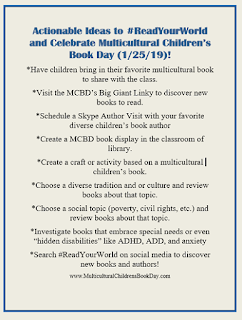Strange Stars: David Bowie, Pop Music, and the Decade Sci-Fi Exploded
Author: Jason Heller
Hardcover: 272 pages
Publisher: Melville House; First Edition edition (June 5, 2018)
ISBN-10: 1612196977
ISBN-13: 978-1612196978
Purchase at Amazon
When I read a blurb describing Strange Stars, my first reaction was that Jason Heller had beaten me to the punch. I had long thought the connections between sci-fi flavored rock music and sci-fi films and books in the 1970s would make for an interesting critical analysis. I was right, except Heller was a much better critic to pull all the strings together than I would have been. By miles and miles.
The book’s title is a tad misleading if you assume David Bowie will be an important thread in the story. Yes, Heller bookends the decade with Bowie’s 1971 “Space Oddity” and its 1980 follow-up, “Ashes to Ashes.” Sure, Ziggy Stardust and The Man Who Fell to Earth aren’t neglected. And the book ends with Bowie’s 2018 death and the release of Black Star.
But Heller probes a rich well of evidence demonstrating that the ‘70s was the decade when sci-fi began to be taken seriously in popular culture, its impact ignited by two films by Stanley Kubrick, 2001: A Space Odyssey and A Clockwork Orange. The Planet of the Apes also contributed to a growing interest in sci-fi and the phenomena of Star Trek was just beginning its widening cult status.
Sci-fi authors cited by many musicians as influences included Robert Heinlein, Isaac Asimov, Ray Bradbury, William Burroughs, Philip Dick, and Frank Herbert, among many, many others. To greater and lesser degrees, these writers influenced popular rock musicians like Paul Kantner’s Jefferson Starship (“Blows Against the Empire,”) David Crosby and The Byrds (“Mr. Spaceman,”) Elton John (“Rocket Man”), Black Sabbath (Iron Man”), and the psychedelic Pink Floyd. At the same time, futuristic electronic sounds and cover art helped define Progressive Rock groups like yes and Emerson, Lake, and Palmer (“Tarkus.”)
Heller also explores cult favorites including the French Magma, Germany’s Kraftwerk and Tangerine Dream, Gary Neuman, Devo, as well as the often forgotten Hawkwind, Arthur Brown’s Kingdom Come, and the avant-garde jazz figure Sun Ra. And these are but the best known of the musical performers and groups Heller lists and describes in minute detail leaving no rare single or obscure album unturned.
Along the way, Heller discusses sci-fi lyrics, the burgeoning use of futuristic synth-sounds, new sub-genres like sci-fi-funk and Kraut-rock, concert events like 1979’s Futurama and the impact of films like The Rocky Horror Picture Show, Star Wars and Star Trek. Occasionally he layers in historical events that piqued public interest in space, futuristic technology, and dystopian predictions like the disappointing passing of Comet Kohoutek and the crash of Star Lab.
In his “Acknowledgements,” Heller credits one reader with keeping him from publishing an encyclopedia instead of a story. There are many, many passages where readers could be forgiven for feeling like they’re following long, encyclopedic entries, especially when Heller recites band name after band name, album title after album title. Such passages might inspire skimming along and there’s nothing wrong with that. Strange Stars can serve as a reference volume as well as an analysis of an amorphous genre, or at least a many-tentacled realm of popular culture. Strange Stars belongs in pretty much every public library and on the private shelves of both sci-fi and rock lovers.
MORE ABOUT THE REVIEWER
Dr. Wesley Britton IS THE AUTHOR OF The Beta Earth Chronicles and a reviewer who love science fiction. Learn more about him:
MORE ABOUT THIS BLOG, GETTING REVIEWS AND ANOTHER PROMOTION FREEBIE
 The New Book Review is blogged by Carolyn Howard-Johnson, author of the multi award-winning HowToDoItFrugally series of books for writers. Of particular interest to readers of this blog is her most recent How to Get Great Book Reviews Frugally and Ethically (http://bit.ly/GreatBkReviews ) that covers 325 jam-packed pages covering everithing from Amazon vine to writing reviews for profit and promotion. Reviewers will have a special interest in the chapter on how to make reviewing pay, either as way to market their own books or as a career path--ethically!
The New Book Review is blogged by Carolyn Howard-Johnson, author of the multi award-winning HowToDoItFrugally series of books for writers. Of particular interest to readers of this blog is her most recent How to Get Great Book Reviews Frugally and Ethically (http://bit.ly/GreatBkReviews ) that covers 325 jam-packed pages covering everithing from Amazon vine to writing reviews for profit and promotion. Reviewers will have a special interest in the chapter on how to make reviewing pay, either as way to market their own books or as a career path--ethically!This blog is a free service offered to those who want to encourage the reading of books they love. That includes authors who want to share their favorite reviews, reviewers who'd like to see their reviews get more exposure, and readers who want to shout out praise of books they've read. Please see submission guidelines on the left of this page. Reviews and essays are indexed by genre, reviewer names, and review sites. Writers will find the search engine handy for gleaning the names of small publishers. Find other writer-related blogs at Sharing with Writers and The Frugal, Smart and Tuned-In Editor.
Note: Participating authors and their publishers may request the social sharing image by Carolyn Wilhelm at no charge. Please contact the designer at: cwilhelm (at) thewiseowlfactory (dot) com. Provide the name of the book being reviewed and--if an image or headshot of the author --isn't already part of the badge, include it as an attachment. Wilhelm will send you the badge to use in your own Internet marketing. Give Wilhelm the link to this post, too!










